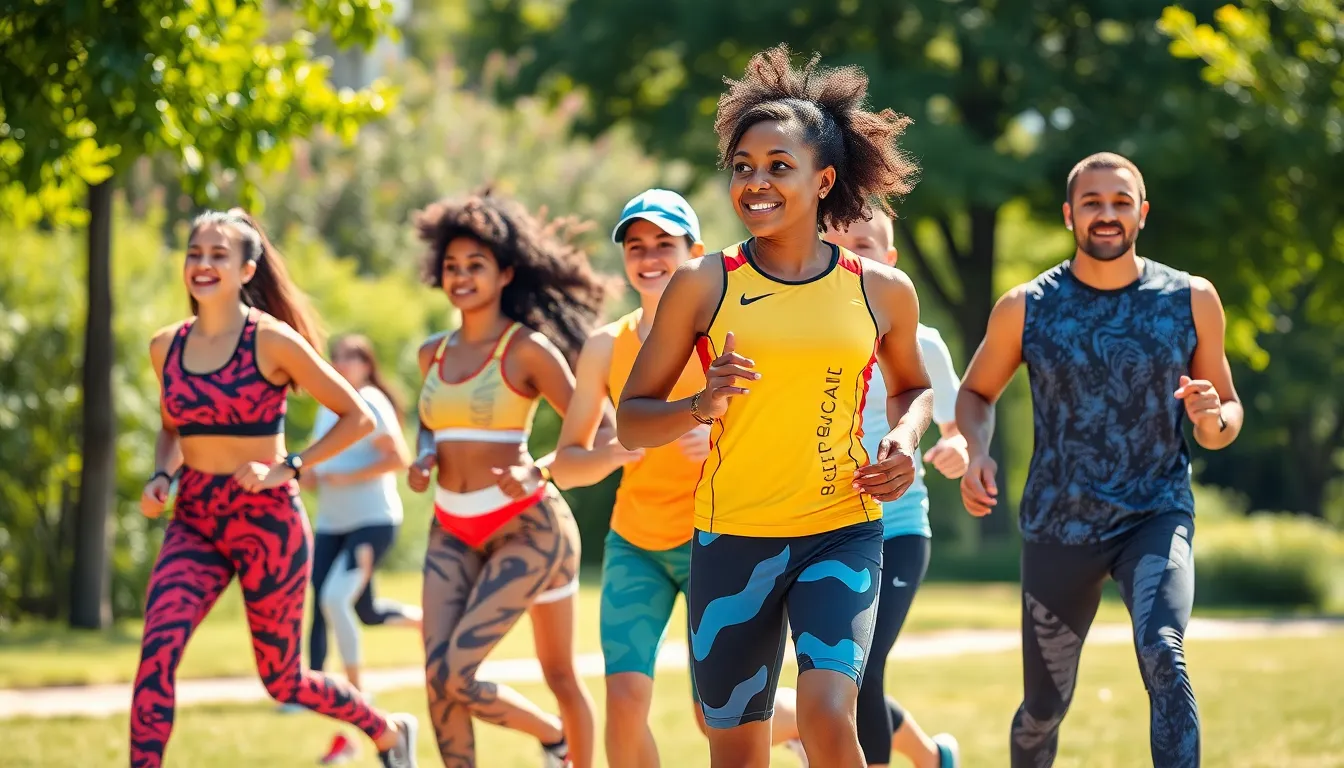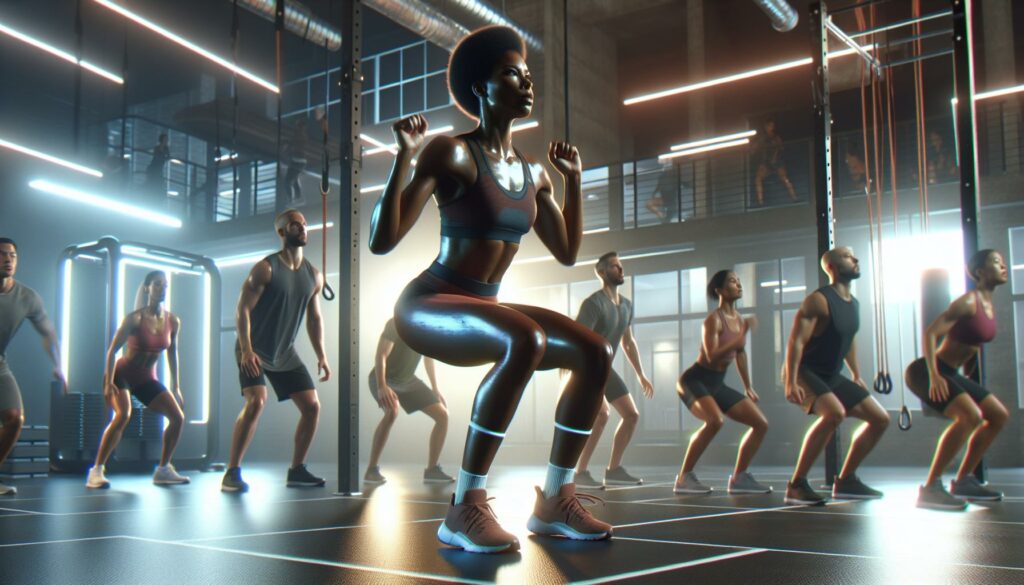Athletic fashion isn’t just for the gym anymore; it’s taken over the streets, offices, and even brunch spots. Gone are the days when workout gear was strictly functional. Today, it’s all about making a statement while breaking a sweat—or sipping a latte. With the rise of athleisure, everyone’s looking for that perfect balance between comfort and style, and trust us, it’s a game-changer.
Athletic Fashion Trends
Athletic fashion trends reflect a seamless integration of style and functionality. Design elements now prioritize comfort while maintaining aesthetic appeal. Bright colors and bold patterns dominate athletic wear, attracting attention in various environments. Brands like Lululemon and Nike exemplify the blend of performance and chic design, making their products staples in many wardrobes.
Athleisure garments, versatile by nature, easily transition from gym settings to casual outings. Leggings and joggers, once confined to workout sessions, now appear in social gatherings and workplaces. This versatility signals a significant cultural shift toward casualization in fashion standards. Accessories such as stylish sneakers and sporty backpacks enhance the look, ensuring functionality without sacrificing style.
Sustainability trends gain traction, prompting brands to use eco-friendly materials in athletic fashion. Consumers increasingly prioritize ethical production, steering their purchasing decisions. Innovations in technology improve moisture-wicking and breathability, appealing to both athletes and fashion enthusiasts. Moreover, collaborations between high-end designers and athletic brands elevate the perception of sportswear, merging luxury with everyday practicality.
Bold logos and statement graphics contribute to the appeal, creating a strong brand presence in athletic wear. Consumers express personal style through unique combinations of pieces, enabling individuality in casual settings. Street style influences athletic fashion, encouraging a blend of athletic items with everyday clothing. Overall, athletic fashion trends mark a substantial evolution, confirming its place as a significant player in contemporary fashion.
Key Elements of Athletic Fashion

Athletic fashion blends style, comfort, and functionality, driven by current trends. Key elements shape this dynamic sector.
Fabrics and Materials
Innovative fabrics define athletic fashion. Moisture-wicking materials draw sweat away from the body, ensuring comfort during workouts. Breathable fabrics enhance airflow, making workouts more pleasant. Stretchable textiles provide flexibility and support, accommodating a range of movements. Eco-friendly options increasingly gain traction, reflecting consumer demand for sustainability. Brands prioritize the use of recycled and organic materials, catering to environmentally conscious shoppers. Together, these advancements in fabrics contribute to the overall appeal of athletic wear, blending performance with a commitment to better practices.
Colors and Patterns
Color choices significantly impact athletic fashion. Vibrant hues and bold patterns dominate current trends, attracting attention and allowing personal expression. Neon shades like electric blue and hot pink create striking looks, while earth tones offer a more subdued alternative. Patterns range from geometric designs to floral motifs, adding visual interest to functional wear. Seasonal trends influence color palettes, with pastels emerging in spring and deeper tones in fall. Athletic brands incorporate unique graphics and logos, transforming garments into statements of identity. Enhanced visual appeal keeps athletic fashion at the forefront of contemporary style.
Popular Athletic Fashion Brands
Athletic fashion brands consistently redefine the industry by merging style with functionality. These brands prioritize innovation and sustainability, appealing to a broad audience.
Brand Highlights
Nike remains a dominant force, known for its cutting-edge technology and iconic designs. Adidas follows suit, offering a blend of performance and streetwear aesthetics. Lululemon stands out in the athleisure market, famous for its premium yoga apparel and community-driven approach. Under Armour emphasizes high-performance gear, specifically targeting athletes with its innovative materials. Reebok integrates classic silhouettes with modern styles, appealing to various demographics.
Collaborations and Influences
Collaborations shape trends in athletic fashion significantly. Notable partnerships include Nike’s collaborations with Off-White, merging high fashion and sportswear seamlessly. Adidas teamed up with influential designers like Yohji Yamamoto, bringing unique designs to the forefront. These partnerships elevate sportswear’s appeal, attracting fashion-conscious consumers. Consumer interest in Kith and Puma’s collaborations showcases the demand for exclusive collections. Influences stem from streetwear culture, and brands leverage this to reach younger audiences effectively.
Athleisure: The Intersection of Comfort and Style
Athleisure emerged as a prominent trend, marrying comfort with style seamlessly. This category of clothing allows people to transition easily from workout sessions to casual outings. Items like leggings, joggers, and stylish sneakers dominate wardrobes, reflecting a preference for relaxation without sacrificing aesthetics.
Innovative designs focus on functional fabrics that enhance movement and breathability. Brands are prioritizing materials like moisture-wicking and stretchable textiles, appealing to athletes and fashion-forward individuals. Bright colors and bold patterns stand out, enabling personal expression through their outfits.
Sustainability plays a pivotal role in current athleisure. Many brands utilize eco-friendly materials and ethical production methods, addressing growing consumer demand for responsible fashion choices. Lululemon and Adidas lead the way with their commitment to environmental consciousness.
Collaborations between high-end designers and athletic brands elevate athleisure’s status in the fashion world. Notable partnerships, such as Nike with Off-White and Adidas with Yohji Yamamoto, create buzz and attract attention from fashion enthusiasts. These alliances contribute to the overall blending of luxury and functionality.
Streetwear influences continue shaping athleisure trends as well. This cultural crossover captures the interest of younger consumers, merging sporty aesthetics with urban style. Athleisure symbolizes a significant cultural shift toward casualization, becoming an acceptable choice for various occasions, from brunch to office settings.
Overall, athleisure stands as a dynamic trend, encapsulating comfort, style, and responsibility in contemporary fashion.
Seasonal Trends in Athletic Fashion
Seasonal trends in athletic fashion reveal the dynamic nature of style within this sector. Spring often brings pastels and floral patterns, while autumn introduces warm tones and earthy shades. Summer highlights vibrant colors and lightweight fabrics, suitable for outdoor activities.
Patterns shift from year to year, yet bold prints consistently attract attention. Stripes, chevrons, and abstract graphics make garments stand out. Consumers increasingly seek versatility, choosing pieces that transition effortlessly from workouts to casual outings.
Materials reflect the demand for performance-enhancing technologies. Moisture-wicking fabrics remain popular, ensuring comfort during intense workouts. Breathable materials also play a crucial role, maintaining body temperature in various conditions.
Sustainability increasingly influences color palettes and fabric choices. Eco-friendly options, such as recycled polyester, merge functionality with environmental consciousness. Brands like Adidas and Lululemon lead in integrating sustainable practices, appealing to eco-aware consumers.
Collaborations shape seasonal trends in unexpected ways. High-profile partnerships, such as Nike with Off-White, introduce fresh aesthetics and attract fashion-forward individuals. These collaborations between athletic brands and designers not only diversify offerings but also turn athletic wear into a statement.
Accessories complement seasonal trends effectively. Stylish hats, backpacks, and water bottles enhance functionality without compromising style. Key items include sleek sneakers that combine performance with eye-catching design.
Innovations in athletic fashion continue to shape preferences. Advanced cushioning technology enhances comfort, making shoes suitable for both athletic endeavors and everyday wear. Attention to detail captivates consumers, reinforcing athletic wear as a staple in contemporary wardrobes.
Conclusion
Athletic fashion trends have undeniably reshaped the way individuals approach style and comfort. This evolution highlights a cultural shift where functionality meets fashion, allowing people to express their personalities while staying active. The emphasis on sustainability and innovation continues to drive the industry forward, making eco-friendly choices and advanced materials a priority.
As brands adapt to changing consumer preferences, collaborations between high-end designers and athletic labels create exciting new aesthetics. The versatility of athleisure ensures it remains a staple in modern wardrobes, seamlessly transitioning from workouts to everyday life. With vibrant colors and bold patterns leading the way, athletic fashion is set to remain a dynamic force in the fashion landscape for years to come.



